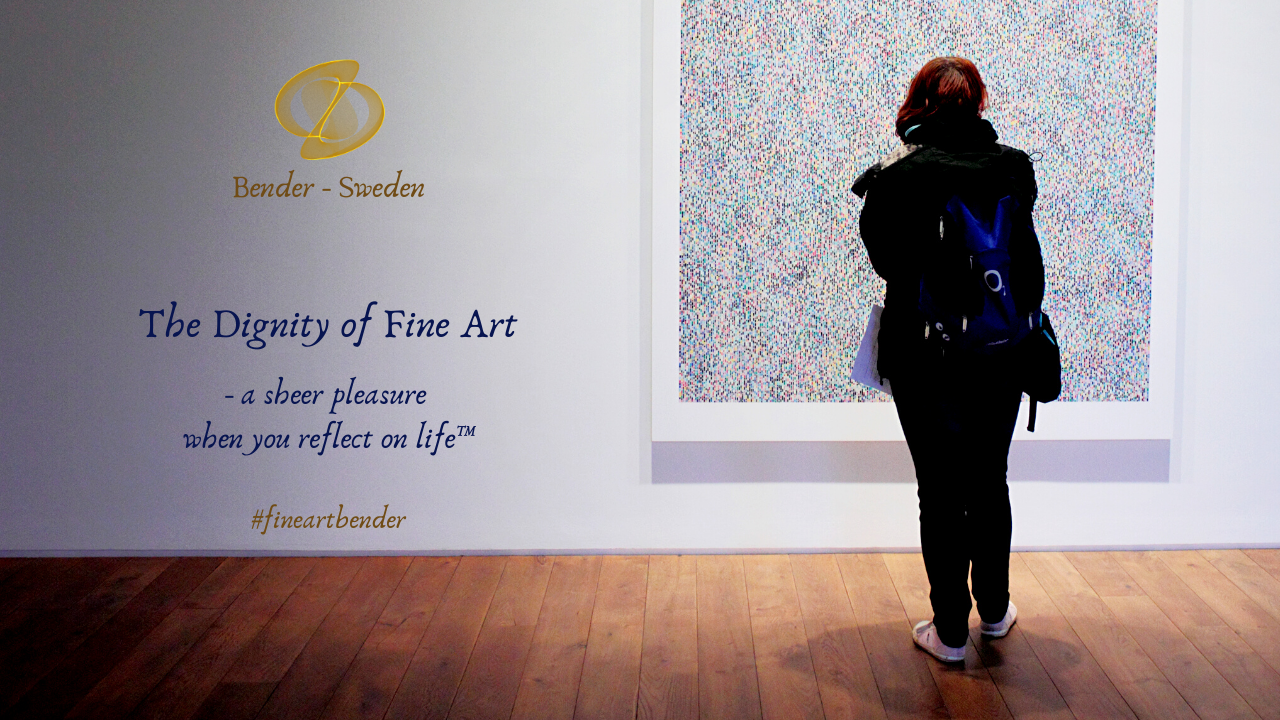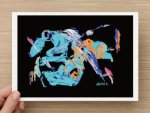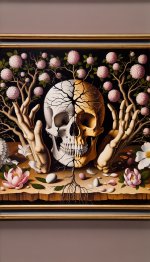Fine Art and The Evolution
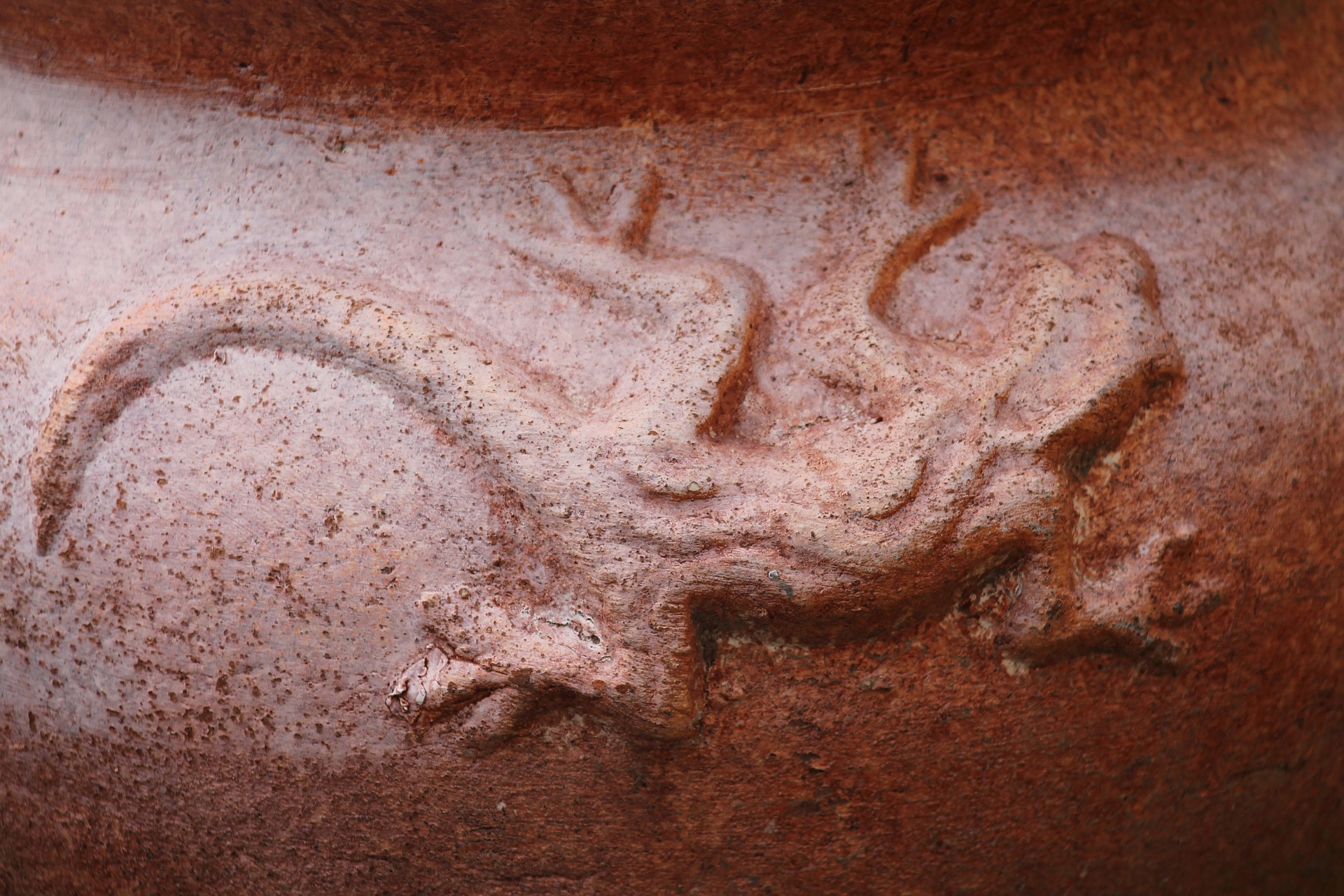
Fine Art and The Evolution
"A couple of million years ago, humans discovered fire, and in 1879 Thomas Edison manufactured a light bulb. Today we take both fire and electricity for granted—but these discoveries were never obvious, and though they were made millions of years apart from one another, they aren't completely independent, either; to get from one to the next, humans made crucial innovations that not only advanced the linear progression of science and technology, but opened our imaginations to what could be possible in the future. Art is no different." (Art Space, 2019).
As we approach the area of fine art and the evolution, we may first have to look more closely at the issue; 'What is art history?' "Art history might seem like a relatively straightforward concept: "art" and "history" are subjects most of us first study in elementary school. In practice, however, the idea of" the history of art "raises complex questions. we mean by art, and what kind of history (or histories) should we explore? Let's consider each term further. (Khan Academy, 2019).
Video: The Evolution of Art (and how it Shaped the Modern World)
Works of Art of All Time, is a personal selection of the ten greatest works of all time. To get some perspective in this field; fine art and the evolution, which was recently noted in the media that it is about to become larger than the financial market, caution, here are some examples from Biography online, 2019.
The history of Art dates way back around 10,000 – 1,000 B.C. as evidenced by sculptures, cave and rock paintings of our long gone ancestors. It would normally depict animals and human-like forms or outline of the primitive man equipped with arrows and spears, at a time when hunting was considered the primary source of food and essential for survival.
Art has progressed from this primitive period and it would not take long before more sophisticated styles were introduced. Here´s another perspective of; The 10 greatest works of art ever...
Works from the Renaissance art period;
It was toward the end of the 14th century that the early Renaissance period began in Florence, Italy.
During this period even though the subject matter of art remained mostly Christian there were different symbols and themes introduced which took ideas from modern philosophy and classical mythology, it is still popular up to this day, but artistic styles such as the Early Christian, and
Video: This is the Renaissance Art overview video for TICE ART 1010, a video from the Utah System of Higher Education. Created by Nancy Ross.
Byzantine art as began in the 5th century and went on through to the fall of the Byzantine Empire in the mid-15th century. It was an art form which was practiced in the Empire in Eastern Europe and tended to have highly religious themes and concepts. Then we have
Video: Byzantine Art, the jewel of the Empire
Romanesque art as came about sometime in the year 1000 and it stayed around until around 1150 in France, Italy, Great Britain and the German. This art form simply means “in the style of the Roman.”
Video: Introduction to Romanesque Art
Gothic, Baroque and Rococo as have contributed to the modern day art as we know today:
Gothic art
Gothic art is a style of medieval art that developed in France from Romanesque art of the mid twelfth century. During this proceeding, Gothic architecture was also on the rise; the art spread throughout the Western Europe and covered the entire region of north Alps.
Video: Gothic Art History from Goodbye-Art Academy
"Gothic architecture, architectural style in Europe that lasted from the mid 12th century to the 16th century, particularly a style of masonry building characterized by cavernous spaces with the expanse of walls broken up by overlaid tracery. In the 12th–13th centuries, feats of engineering permitted increasingly gigantic buildings. The rib vault, flying buttress, and pointed (Gothic) arch were used as solutions to the problem of building a very tall structure while preserving as much natural light as possible. Stained-glass window panels rendered startling sun-dappled interior effects." (Encyclopaedia Britannica, 2019).
Video: A Complete Introduction to Gothic Architecture
Baroque Art
The baroque art uses exaggerated motion, easily interpreted and clear details to produce drama, exuberance and grandeur in painting, sculpture, literature, music and dance.
Video: Art History Genres : What Is Baroque?
Rococo art
Rococo is a French word meaning rock work. Rock work was an 18th Century movement in European art. This art style is associated with the period of the famous Louis XII.
Video: Common Characteristics of Rococo Art and Architecture
On the mid-19th century until the early 20th century,
in a search for new standards and endless possibilities, Modern Art was born. This is Arts’ way of coping up with the fast changing world.
Concepts such as:
Impressionism, Cubism, Expressionism, Dadaism, Fauvism and Surrealism became popular and artists from these movements were highly regarded. Pablo Picasso, for example, is considered one of co-founders of the Cubist movement and universally known for his revolutionary artistic accomplishments.
"A French 19th century art movement which marked a momentous break from tradition in European painting. The Impressionists incorporated new scientific research into the physics of colour to achieve a more exact representation of colour and tone.
The sudden change in the look of these paintings was brought about by a change in methodology: applying paint in small touches of pure colour rather than broader strokes, and painting out of doors to catch a particular fleeting impression of colour and light. The result was to emphasize the artist’s perception of the subject matter as much as the subject itself.
Impressionist art is a style in which the artist captures the image of an object as someone would see it if they just caught a glimpse of it. They paint the pictures with a lot of color and most of their pictures are outdoor scenes. Their pictures are very bright and vibrant. The artists like to capture their images without detail but with bold colors. Some of the greatest impressionist artists were Edouard Manet, Camille Pissaro, Edgar Degas, Alfred Sisley, Claude Monet, Berthe Morisot and Pierre Auguste Renoir." (Art Movements, 2019)
Video: Impressionism - A Revolution in Art
Video: Cubism - Overview from Phil Hansen
Video: What is Expressionism? Art Movements & Styles
"The term Expressionism became commonly used in Germany around 1910. Developed from the work of Symbolist artists, expressionist art movements across Germany and Austria emerged; including Die Brucke in Dresden and Der Blaue Reiter in Munich. Artists associated with these groups placed the expression of feelings over all else in their work through the bold use of colour, exaggeration of form and emphasis of the spiritual over the earthly. This short film tracks the story of Expressionism in art, from its beginnings in the early twentieth century, through to its influence on artists today." (National Galleries of Scotland, 2019).
Video: DADAISM Explained
Video: What Is Fauvism?
"What Is Fauvism?. Part of the series: Modern Art History. Fauvism was the first avant-garde art movement developed in the 20th century, and it was spearheaded by the French painter Henri Matisse, who was inspired by Vincent Van Gogh. Experience the fauvist point of view with information from an art historian, critic and curator in this free video on art."
"Dada art was a movement that took place during the First World War, when artists in New York, Zurich and Munich questioned the very meaning of art by displaying crude or simple objects as fine art. Explore the world of Dadaism with information from an art historian, critic and curator in this free video on art." (Dr. Betty Ann Brown, 2019).
What is Surrealism? Art Movements & Styles
"One of the 20th century’s most radical art movements, Surrealism sought to challenge convention through the exploration of the subconscious mind, invoking the power of dreams and the element of chance to challenge the establishment of the day. Where did this revolutionary movement emerge from, who were its key players and what legacy does it have amongst later artists?" (National Galleries of Scotland, 2019).
Video: Introduction to Surrealism
On the latter half of the 20th century,
Modernism, which is the idealistic search for the truth paved the way to the realization that it is in fact unattainable.
Video: An introduction to Modernism in Art and Literature
"Modernism; it can be confusing. So, in today's What The Theory? I wanted to provide something of a modernism crash course. We'll be looking at many different forms of modernist art as well as a tiny bit of modernist architecture and modernist literature.
I've always struggled to find modernism explained simply and it can be a rather complex theory to get your head around. So, through looking at modernist art techniques, I provide an introduction to modernism as well as beginning to discuss modernism vs postmodernism (although, more of that in the next video!).
Hopefully, this will be helpful to those of you looking to gain a better understanding of modernism and the many different modernist art movements!" (Tom Nicholas.com, 2019).
Relativism was introduced and accepted as unavoidable truth.
Video: So, What is Relativism?
Conceptually, it is a point of view that there is no absolute truth and that there is only relative value which is subjective to the differences in perception. This led to the Contemporary Art period, where changing cultures of the world is embedded in the expression of art.
This art further evolved and developed in a more sophisticated form, commonly referred to as fine art.
The movement
This is primarily created for aesthetic purposes. Before, it was only confined to painting, sculpture, architecture, music and poetry, referred as the five greater fine arts. Today, it can be categorized as visual art and performing art.
Visual art may now also refer to ceramics, printmaking, design, and craft, as much as painting and sculpture.
Performing arts is the artistic expression through the use of the artists’ body or voice. Theatre and dance arts are among the oldest forms popular until today. This form as a performing art has undergone a myriad of changes in both scope as well as presentation. Fine arts theater is based on using expressions to relay a message to the audience, for instance using physical expressions using artistic styles such as hand gestures, body language, and verbal expressions as seen in poetry, song, music, and dance.
Video: Performing Arts
An interview with students studying Performing Arts at Worcester College of Technology.
Modern technology plays an important role in the advancement of fine art. While some forms of art were little changed and remained traditional, the integration of technological inventions and a move for postmodern art has introduced a new approach on how artists make their craft.
The use of cameras and video and editing devices have led the way to the development of modern visual arts. Powerful and high resolution lenses help achieve visually compelling images even outside of space. The introduction of 3D technology makes way for a better viewing experience and appreciation of the art of film making.
These modern gadgets bring out the highest quality output and continue to foster people’s interest in art and fine art. This are of art as people know it today may change in the future, but the ability of art to adapt to any circumstances makes it relevant to the world for an indefinite time.
Fine Art - Good for People of All Ages
Art, regardless of your age, is good for us. Art will invite you as a human to strive forth and grow. Take a toddler and let them do art with you – art can help toddlers build their motor skills.
As an adult, when you view fine arts, you are relaxing your mind. Have you ever wondered why those who are more in touch with their “artsy” side tend to be happier in life? Because they use art as a way to escape from time to time.
Why do people collect art?
What drives them? Aeon believes that: "Collectors drive the art world, but what drives art collectors? It’s less about aesthetics than self-identification." For example, they mean: "The oil billionaire J Paul Getty was famously miserly. He installed a payphone in his mansion in Surrey, England, to stop visitors from making long-distance calls. He refused to pay ransom for a kidnapped grandson for so long that the frustrated kidnappers sent Getty his grandson’s ear in the mail. (Aeon, 2019).
Video: The Invention of Collecting
We should also, of course, remember the forthcoming video art
Artsy: What makes video art collectible—or what would you tell a new collector who is weary that the works are reproducible, or aren’t unique objects?
Another valid question; Why is Visual art Important?
"Visual art is everywhere. You may not know it but visual art is the means we communicate, it is in the food you eat, the clothes you wear, the road you pass on, the car you ride on, the website you navigate, the store you buy from, and practically anywhere you set your eyes on." (Roth Society- Arts Transformed, 2019).
Perhaps we should also complement and remember the artist Modigliani.
Maybe he is a window to art history. Let's see how the Guggenheim reason "in" and "about" his value in art history: "A book of 27 black-and-white reproductions of paintings might not immediately catch the eye. However, links to significant events and art-world workings of the time make this Amedeo Modigliani catalogue in the Guggenheim Museum Library Special Collections a fascinating historical artifact." (Guggenheim. org).
We've talked a lot about fine art history, how can we deepen our information through dedicated websites? Let's visit; 'Best of History Websites'
Expose Your Child to Art
It is interesting to note that for children, the various disciplines of fine art are of great use. They help to develop skills in learning and with their relationships with others. Communication becomes easier for a child who has been exposed to art. When they carefully observe, their analytical skills develop. Then, they are better able to express their emotions and what is on their minds.
Take art photography, for example. It takes a lot of patience to practice it and a lot of practice is also necessary. A photographer will be defined by the area in which they find fulfillment when they take their pictures. A person learning the method needs to know how to go about taking a picture in the first place.
For this, they can do research through books or the Internet to see other people’s work. Then, they’ll be exposed to the different kinds of equipment used. In this kind of art, the quality is shown from how the picture is composed to when it is produced.
Designing fine art is essential in expressing one’s decorative side in the home, office or church. Things like glass, wood, ceramic and even metal art, can be used to produce sculptures, create effect on glass windows, do pottery work and to make furniture.
For interior design it’s important to have a creative mind that is open to trying new ideas and concepts.
The Colorful Truth
Color affects people. It also provides a sense of fulfillment. For this reason it’s important to see what color brings out of someone. Also, a great way of self-expression is how a person chooses to design and decorate their home or office. It´s often about the psychology of art.
Graphic Design is a Fine Art
Did you know that graphic design is a form of fine art? Graphic design can help individuals develop their creativity. Graphics are done by using a computer with programs that require expertise. For graphic work, drawing is essential because it helps in creating attention to detail. A great career can be achieved with dedication to proper studies on graphic design and a creative mind.
Forward from Fine Art and The Evolution to
FineArt
Index or Site Map
Since 1987
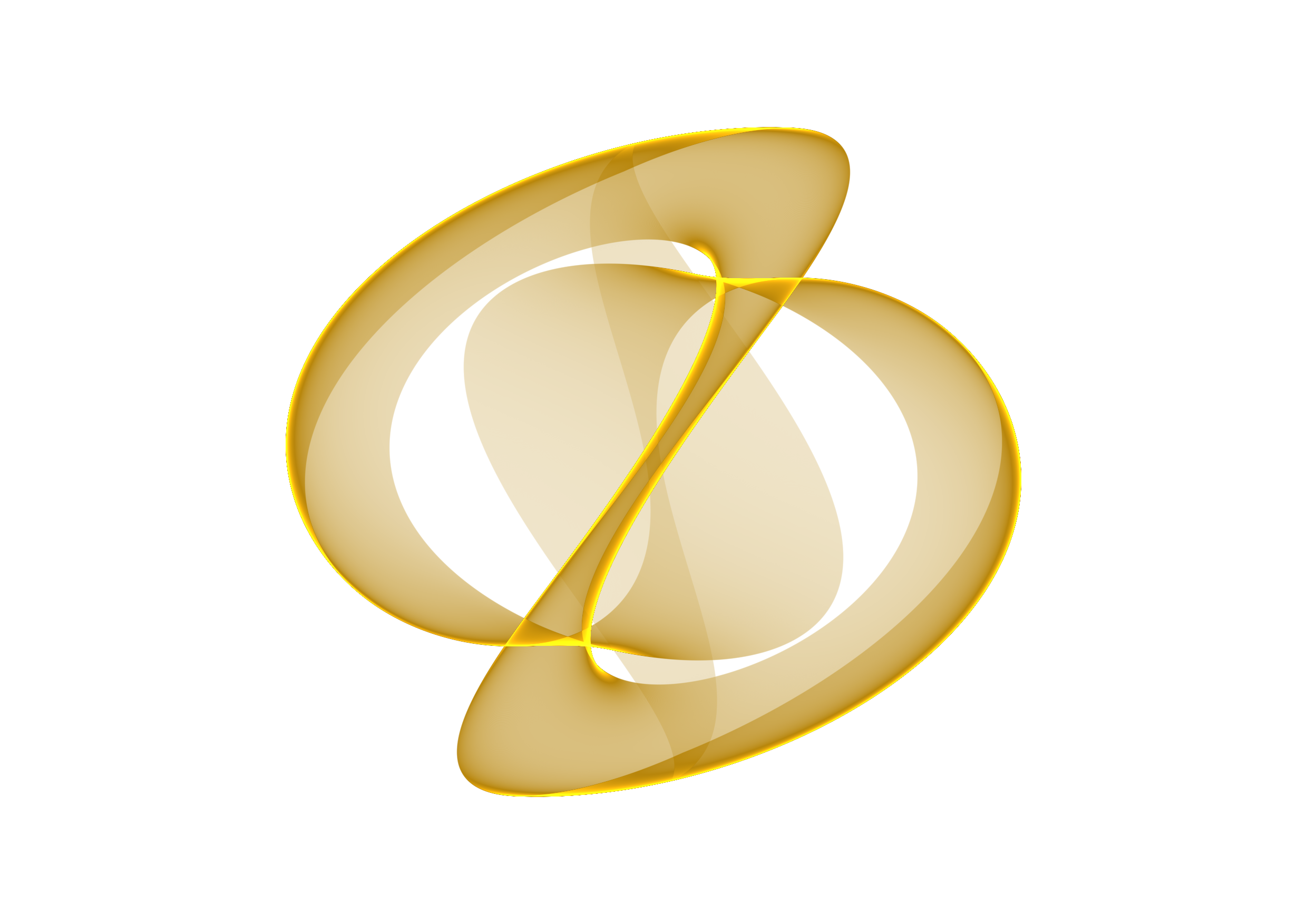
- Vision -
Inspiration - Purpose - Target
- Goals - Strategy
2025?
Ingenting är kraftfullare
än en idé vars tiden är inne .
-Victor Hugo
